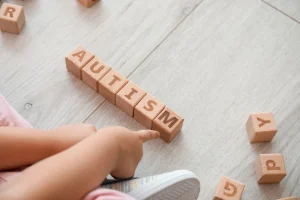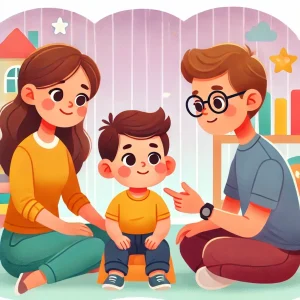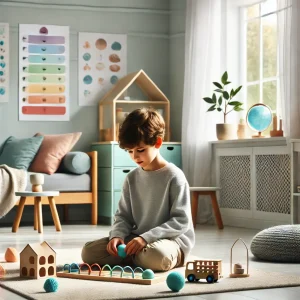Spotting Still Face Syndrome: 6 Triggers to Keep an Eye On
Last Updated: October 23, 2024
Have you ever noticed how your child’s face lights up when you smile, or how anxious they become when you’re distracted or not fully engaged? This instinctive reaction is closely tied to Still Face Syndrome, a term that describes how young children, especially infants, respond when their caregivers show no emotion or remain unresponsive. Children depend on facial expressions for security and connection, so when they encounter a blank, “still” face, they may feel confused, stressed, or disconnected. Just imagine trying to talk to someone who doesn’t react—it’s unsettling, and that’s exactly how kids feel during these moments.
Also read: How Still Face Syndrome Affects Your Child’s Emotional Health
What Is Still Face Syndrome Anyway?
Let’s break it down – Still Face Syndrome is all about how your child reacts emotionally when you suddenly become unresponsive or your face goes blank. Imagine playing happily with your little one – they giggle, you smile back – then suddenly, you go expressionless. No smiles, no frowns, just a still face. For your child, this is confusing and unsettling. Children thrive on emotional connection, and when a caregiver’s face “shuts off,” they often feel lost, frustrated, or even anxious.
Babies and toddlers naturally rely on your facial cues to understand the world around them. Think about it: they learn to smile when you smile, they mirror your laughs, and they look to your face for comfort and reassurance. So, when that feedback disappears, they struggle to make sense of it. This can cause them to show signs of stress, such as turning away, crying, or trying harder to get your attention. That’s essentially what Still Face Syndrome is – a child’s emotional response to a caregiver’s unchanging, unresponsive face.
Why Does Still Face Syndrome Matter for Your Child’s Development?
Understanding Still Face Syndrome and why it happens is vital to helping your child build healthy emotional connections. Emotional development in early childhood is like the foundation of a house – it needs to be solid and supportive to handle whatever comes next. Kids learn to navigate their feelings and understand their world through responsive, consistent interactions. If they often encounter a “still face,” it can lead to confusion, insecurity, and even difficulties in emotional regulation.
Recognizing these reactions and being responsive to your child’s emotional needs can significantly impact their development. It means being aware of how they feel, responding to their needs, and understanding what makes them feel safe and connected. By doing so, you not only support their emotional growth but also lay the groundwork for their social skills and self-confidence.
Also read: Identifying and Managing Still Face Syndrome in Children
Why Triggers Matter – Spot Them Early!
When it comes to Still Face Syndrome, knowing what triggers it can make a big difference for your child. Kids feel safe and happy when they see your face showing emotions and reacting to them. But when they see a blank face or no response, it can make them feel anxious or confused. That’s why it’s so important to spot these triggers early on.
By being aware of what can upset your child, you can step in and respond in a way that makes them feel loved and understood. Whether it’s giving them a smile, holding their hand, or talking to them, these little actions show your child they are seen and valued.
Also read: How Parents Can Easily Spot Still Face Syndrome: DIY Tips
Why Spotting Triggers Helps Your Child
Sometimes triggers for Still Face Syndrome happen without us realizing it – maybe you look at your phone when your child wants to play, or you seem distracted when they’re talking to you. Noticing these moments can help you quickly respond to your child’s needs and build a stronger bond.
If you see your child getting upset or trying hard to get your attention, they might be feeling disconnected. Giving them warmth and attention in those moments can help them feel secure and connected to you.
The 6 Triggers to Watch Out For
Understanding the triggers of Still Face Syndrome can help you become more mindful of how your child feels in everyday interactions. Let’s look at the 6 main triggers that can make your child feel disconnected and what you can do to avoid them.
1. No Eye Contact
Eye contact is one of the first ways babies bond with you. When you look into your child’s eyes, you’re sending a message that they are seen, loved, and safe. But when eye contact is missing, it can make your child feel ignored or even invisible.
- How to make eye contact count: Try to look at your child during play, while talking to them, or even during feeding times. Little moments of eye contact throughout the day build trust and connection.
2. Ignoring Your Child Suddenly
Children are very sensitive to your attention. Imagine playing or talking with your child and then suddenly turning away or stopping the interaction without warning. That sudden break in attention can make them feel abandoned or confused.
- How to stay focused on your child: Try to avoid suddenly stopping a conversation or game without letting them know. Simple phrases like, “I need to check something, I’ll be back in a minute,” can help them feel secure.
3. A “Still” or Expressionless Face
When your face shows no expression, your child may find it hard to know what you’re feeling. A blank face can make them wonder if something is wrong or if they’ve done something to upset you. Babies and young children naturally look to your face to understand how they should feel.
- Show expressions to build connection: Use simple facial expressions – smiling when they’re happy, nodding when they talk, showing a calm face when they’re upset. Your expressions are a big guide to how they understand emotions.
4. Screen Time Over Face Time
We’ve all been there – scrolling on our phones or checking messages. But for a child trying to get your attention, it can feel like they’re competing with a screen. If screen time becomes more frequent than face time, your child may start to feel unnoticed or unimportant.
- Balance screen time with face time: Make moments where screens are put away – during meals, playtime, or bedtime – so your child knows they have your full attention. These moments of being present can strengthen your bond and make your child feel valued.
5. Mixed Signals
Children need consistency to feel secure. If your responses are unpredictable – for example, laughing one minute and being upset the next – it can make your child unsure of how to respond. They might feel confused about how to react to your emotions, which can affect how they learn to handle their own feelings.
- Be consistent with your emotions: Try to react in ways that match the situation. If your child is happy, smile back. If they’re upset, respond with calmness and care. This helps them understand emotions and feel stable.
6. Physically There, But Not Really Present
It’s possible to be physically with your child but emotionally distant. Maybe you’re stressed, tired, or just “checked out.” Kids notice when you’re not truly present, and it can make them feel like they’re alone even when you’re sitting right next to them.
- Practice being emotionally present: When you’re with your child, focus on them. Put away distractions, listen to what they say, and engage in their activities. Quality time is more about connection than just being in the same room.
Triggers and Prevention Tips
| Trigger | Prevention Tip |
|---|---|
| No Eye Contact | Eye contact is essential for bonding and helping your child feel seen and valued. A lack of eye contact can make your child feel ignored or unimportant. |
| Ignoring Your Child Suddenly | Abruptly stopping attention (e.g., turning away mid-play or suddenly checking your phone) can make your child feel disconnected or abandoned. |
| A “Still” or Expressionless Face | Children look for emotional cues in your face. A blank or expressionless face can leave your child unsure of how you’re feeling, causing them to feel disconnected. |
| Screen Time Over Face Time | Children can feel neglected when caregivers are constantly on their phones or distracted by screens, making it hard for them to feel emotionally connected. |
| Mixed Signals | Inconsistent emotional responses (e.g., laughing when your child is upset or showing anger during play) can confuse your child and affect their ability to understand emotions. |
| Physically There, But Not Really Present | Being physically present but emotionally distant (e.g., stressed, distracted, or “checked out”) can lead to feelings of isolation for your child. |
What Signs Should You Look For?
As a parent, you know your child best – so you might notice when something feels “off.” When it comes to Still Face Syndrome, there are some common emotional and behavioral signs to look out for. Recognizing these early can help you step in and provide the comfort your child needs.
Emotional and Behavioral Reactions to Watch For
Children respond in different ways when they experience a lack of emotional connection. Here are some signs your child may be feeling disconnected or stressed:
- Crying or Fussiness
If your child seems to get upset easily when you’re not giving them attention, it could be a sign that they’re feeling emotionally disconnected. Sudden crying, fussiness, or even tantrums can be their way of trying to get your attention back. - Clinginess and Seeking More Attention
Does your child become more clingy than usual? If they are constantly trying to get close to you, grabbing at you, or following you around, they may be trying to reconnect emotionally. It’s their way of saying, “Hey, I need you!” - Avoidance or Withdrawal
On the other hand, some kids react by withdrawing. If they stop trying to get your attention or seem to zone out, this can be a sign that they’re feeling disconnected or unsure about how you feel. They might look away, refuse to engage, or become quiet and still. - Difficulty Calming Down
Once upset, does your child take a long time to calm down? Difficulty in self-soothing or going back to play after a minor upset can be a clue that they’re feeling emotionally unsettled. They might need a little extra help from you to feel safe and secure again. - Overreaction to Small Changes
If you notice your child reacting strongly to small changes – like you leaving the room for a minute or not immediately responding to them – it could mean they’re feeling anxious or uncertain. This heightened sensitivity is a way for them to signal their need for reassurance and connection.
Also read: 5 Early Signs of Still Face Syndrome You Need to Know
Recognizing the Signs vs. Responding to Them
| Signs to Look For | How to Respond |
|---|---|
| Crying or Fussiness | If your child cries easily or seems fussy often, it may indicate they are feeling emotionally disconnected or overwhelmed. |
| Clinginess or Seeking Attention | When your child is more clingy than usual, constantly seeking attention, or won’t let you leave, they might be feeling insecure. |
| Withdrawal or Avoiding Eye Contact | If your child seems to withdraw, avoid eye contact, or isolate themselves, they might be struggling to connect emotionally. |
| Difficulty Calming Down | When a child struggles to calm down after being upset or stays agitated for long periods, they may need extra emotional support. |
| Overreaction to Small Changes | Children may have strong reactions to minor changes (like a different bedtime routine or leaving the room briefly). This can show heightened anxiety or need for reassurance. |
How to Spot These Signs Early
Spotting these signs isn’t about being perfect or never getting distracted – it’s about understanding your child’s cues. Here are some tips to help you notice these reactions early:
- Be Present in the Moment
Pay attention to how your child reacts when you’re playing with them or just spending time together. Are they relaxed and happy, or do they seem to get upset when your attention shifts? - Notice Patterns in Behavior
Look for patterns in how your child reacts. If they frequently get clingy, upset, or withdrawn in certain situations, these may be moments when they’re feeling emotionally disconnected. - Trust Your Instincts
Trust your gut. If something feels off or your child seems more emotional than usual, it’s okay to step in and connect. A simple smile, hug, or word of reassurance can make all the difference.
Also read: Top 5 Parenting Tips to Prevent Still Face Syndrome
How to Tackle These Triggers
Now that you know what triggers Still Face Syndrome and how it affects your child, let’s talk about how you can step in to keep your little one feeling connected and secure. The good news? It’s not about making big changes but more about the little things you do every day. Your child craves simple moments of attention, eye contact, and comfort. Here are some tips to help you stay emotionally present and build a stronger connection with your child.
1. Be Present in the Moment
When you’re with your child, try to be fully there. Even if it’s just 10 minutes a day of undivided attention, make it count. Put away your phone, look into their eyes, and be part of their play or conversation. They’ll feel your presence and know that they have your full attention.
2. Use “Emotion Check-Ins”
Create small moments throughout the day to check in on how your child is feeling. Ask questions like, “How are you feeling?” or “What made you smile today?” Acknowledge their emotions, whether it’s happiness, sadness, or frustration. This helps them feel heard and builds their emotional vocabulary.
3. Give Consistent, Positive Reactions
Consistency is everything. React positively and predictably to your child’s cues, whether they’re looking to you for comfort, approval, or playfulness. A warm smile, a reassuring touch, or simply listening when they speak helps them feel safe and connected. Your consistent responses are the building blocks for their emotional security.
4. Create Daily Rituals Together
Routines like bedtime stories, morning snuggles, or shared meals can go a long way in making your child feel emotionally secure. These predictable moments provide comfort and something for your child to look forward to. Even if you’re short on time, little rituals make a big impact.
5. Slow Down and Enjoy the Little Moments
It’s easy to get caught up in the busyness of daily life, but taking time to slow down and enjoy little moments can be powerful. Laugh together over silly jokes, join them in their play, or simply sit quietly and share a moment. These shared experiences help your child know they are loved and cherished.
6. Balance Screen Time
We all need time to check our phones or get some work done, and that’s okay! But try to balance it out with “face time” with your child. Set boundaries on when to put devices away – like during mealtimes, playtimes, or bedtime – so your child feels like they have your attention.
Know more about on How Still Face Syndrome Affects Your Child’s Emotional Health
How Can You Prevent These Triggers?
Preventing triggers that cause Still Face Syndrome is all about being emotionally present and creating consistent routines that help your child feel secure. Here are some practical ways to do this:
- Create Simple Daily Routines: Regular rituals, like a bedtime story, morning cuddles, or having dinner together, give your child a sense of stability. These moments are great opportunities for bonding.
- Put Down Distractions: We all get busy and have devices around us constantly. But when you’re with your child, try to limit screen time and distractions so you can focus on them. Even a quick break from your phone to look into their eyes can help your child feel valued.
- Show Positive Emotions and Reactions: Smile back when they smile, listen when they talk, and be mindful of your facial expressions. Remember, your child is looking to you to learn about emotions.
Also read: Simple DIY Engagement Activities to Combat Still Face Syndrome
When Should You Seek Extra Help?
While many children might show signs of Still Face Syndrome at some point, if you notice that your child is consistently struggling to connect, always upset, or seems overly anxious or withdrawn for long periods, it might be time to seek some additional support. This is especially important if:
- The signs of disconnection persist over weeks or months.
- Your child is finding it hard to calm down or settle into routines.
- They seem to be showing extreme reactions that affect their day-to-day activities.
Conclusion
In the end, it all comes down to connection. As a parent, your simple actions – like smiling, listening, or giving a gentle hug – make a big difference in your child’s emotional world. Being aware of your facial expressions and how you respond to your child can help them feel seen, loved, and understood. Remember, building stronger emotional bonds happens one moment at a time, and even small efforts can make a huge impact.
So take it one step at a time. Laugh together, play together, and share those little moments that truly matter. Your child looks to you for comfort and love, and you’re more than capable of being the strong emotional connection they need. If you’re looking for more tips on building a strong bond with your child, Wellness Hub is here to support you with helpful articles and resources for every step of your journey.
Frequently Asked Questions:
1. What is Still Face Syndrome, and why does it happen?
Still Face Syndrome refers to how young children react when they see a caregiver’s face become blank or unresponsive. This often happens when a parent suddenly stops showing emotions or gets distracted, leaving the child feeling disconnected or insecure.
2. What are the signs of Still Face Syndrome in children?
Some signs of Still Face Syndrome include crying, fussiness, clinginess, or withdrawal. A child may also struggle to calm down or show heightened sensitivity to changes in attention from their caregiver.
3. How can I prevent triggers of Still Face Syndrome?
Preventing Still Face Syndrome triggers can be simple. Maintain regular eye contact, respond consistently to your child’s emotions, limit screen time when together, and create daily routines for bonding. Small, consistent actions can make your child feel emotionally connected and secure.
4. Why is my child suddenly clingy or fussy around me?
Clinginess or fussiness can be a sign that your child feels emotionally disconnected. It’s often their way of asking for your attention and comfort. Try giving them undivided attention, eye contact, and reassuring reactions to help them feel more secure.
5. Can screen time cause Still Face Syndrome?
Yes, excessive screen time can contribute to Still Face Syndrome. When a parent or caregiver is often distracted by a phone or device, a child may feel unnoticed or emotionally disconnected. Balancing screen time with active face-to-face interaction is essential.
6. What can I do if I notice signs of Still Face Syndrome in my child?
If you notice signs like fussiness, withdrawal, or clinginess, try to be present and respond with warmth and attention. Simple acts like eye contact, physical touch, and consistent emotional responses can help your child feel connected. If signs persist, consider reaching out to a pediatrician or therapist.
7. How do I build a strong emotional bond with my child?
Building a strong emotional bond is all about the little moments. Be present, respond to their needs with warmth, play together, and establish routines like bedtime stories or shared meals. Consistent, positive interactions help your child feel loved and secure.
8. When should I seek extra help if my child shows signs of Still Face Syndrome?
If your child consistently struggles to connect, remains overly anxious, or the signs of disconnection last for long periods, it might be helpful to talk to a pediatrician or a child therapist. Professional support can provide strategies to strengthen your child’s emotional health.
9. What’s the best way to connect with my child during busy days?
Even if you’re busy, small moments count! Set aside a few minutes each day for face-to-face time without distractions. Look into your child’s eyes, ask them how they’re feeling, and respond to their emotions with warmth and understanding.
10. How does Still Face Syndrome affect a child’s development?
If left unaddressed, Still Face Syndrome can affect a child’s ability to form secure emotional bonds. Children need consistent emotional responses to learn how to handle their own feelings and build healthy relationships as they grow.
About Author:
Lasya Vooturi,
Clinical Psychologist (A) & Behavioral Therapist
Lasya holds a Professional Diploma in Clinical Psychology from Amity University, where she deepened her understanding of psychological principles from March 2023 to March 2024. With over a year of dedicated experience as a Behavioral Therapist, Lasya has honed her skills in applying effective therapy techniques tailored to individual needs. Fluent in Telugu, Hindi, and English, she is adept at connecting with a diverse range of clients, ensuring comprehensive communication and understanding. Lasya’s approach is grounded in empathy and scientific rigor, making her a trusted ally in navigating mental health challenges.
Book your Free Consultation Today
Parent/Caregiver Info:
Client’s Details:
* Error Message








